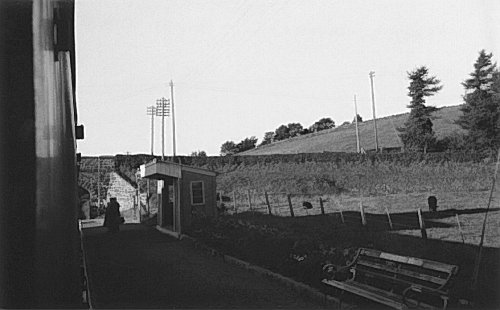The North Cornwall Railway
HALWILL TO TOWER HILL
Halwill, the junction station (link to map of station area) where the North Cornwall Railway's line to Padstow parted company with the LSWR's line to Bude, was sited between the two hamlets of Beaworthy and Halwill and, down the years, had a couple of name changes, from Halwill to Halwill Junction on the opening of the Launceston line, then to Halwill for Beaworthy in 1923. The new NCR line came into the LSWR's station by some 17 chains, running parallel to the Holsworthy line and joining the down platform loop line. There was much splitting and joining of trains here as many for the Okehampton direction conveyed portions to/from the North Cornwall and Bude lines. Very quiet for some of the day, the station would errupt into activity with arivals from all directions! From 27 July 1925 the North Cornwall and Bude lines were joined by the grandly named North Devon and Cornwall Junction Railway that came down from Torrington to its own platform just north of the main station, though no through carriages were worked off this line.
Left: A LSWR luggage label, note the spelling error. Right: A Southern Railway luggage label, both reproduced with
thanks from the Mike Morant collection.
Departing Halwill Junction, approximately 600ft above sea level, a sharp curve took the line away from the LSWR line, crossed under the road from Dunsland Cross and then started a set of switch-back curves until it entered the top of the valley of the River Carey. The line crossed the stream at Halwill Bridge, just a short way from the hamlet of Halwill, immediately after which there was, for a very short time in 1919 and 1920, a siding for ten wagons. Despite always being a single-track line, the railway was 28 feet wide, which would have allowed doubling had it ever been justified. Descending at a ruling gradient of 1 in 73 the line wound down the valley to Ashwater, 5m 7ch from Halwill Junction.
Ashwater station (link to map of station area) was on the valley floor, with the village a couple of hundred feet higher, and was provided with two platforms and a small but busy yard. The platforms were only long enough to take seven coaches, which caused operating difficulties when a long goods train needed to cross another train necessitating the tail of the goods being set back into the yard, and careful planning should a train of eight or more coaches be involved to ensure that this train arrived second in the station! From 18 October 1936 the loop, though not the platforms, was lengthened allowing a twelve coach, or 35 wagon, train to be safely kept within the loop. With declining business the goods yard closed on 7 September 1964 whilst from 7 November 1965 the station was reduced in status to that of an unmanned halt, with all the points clipped and padlocked for the former up line, therfore no longer allowing the passing of trains at Ashwater. 
Left: A LSWR luggage label reproduced with thanks from the Mike Morant collection.
Leaving Ashwater the line followed the east side of the river, cutting into the valley side in places to maintain a minimum curve of 30ch radius until the valley widens near Virginstow, then onto a long straight that led into Tower Hill station, 8m 55ch from Halwill Junction and some 300ft lower at about 300ft above sea level.
Tower Hill station, (link to map of station area) named after a nearby farm, started off its life identical in layout to Ashbury. though was much changed down the years. Following the First World War crossing facilities were withdrawn and then, from 16 June 1920, the down loop was taken out of use and the signalbox closed leaving the section as one of seven miles between Ashwater and Launceston. Subsequently a ground frame was installed to operate the yard points, released by a key on the single line tablet. From 1928 Tower Hill came under the control of Launceston and in 1933 the goods siding was shortened. Then came the Second World War and life at Tower Hill changed dramatically. In the March 1943, with the build-up for the invasion of France, two new sidings were laid and the headshunt lengthened considerably, the down loop was restored and a new signal box commissioned in the booking hall, extending out onto the up platform. The following month the points to the goods yard were moved south allowing a 40 wagon train to be held in each loop and in the headshunt. Wartime traffic was mainly ammunition and by August 1944 almost all of this had gone to France. The yard was closed and removed in 1950, although the long crossing loop remained extant and was most useful for the 1950s build up of holiday traffic, not that any of the holiday trains called here (other than if held whilst crossing another train). The yard closed in February 1964 and was lifted the following year whilst the down loop was once again taken out of use, and the signalbox closed, on 7 November 1965 - the same day that Ashwater's signalbox closed and thereby creating a single section from Halwill to Launceston. 
Right: A LSWR luggage label reproduced with thanks from the
Mike Morant collection.
Return to top
|

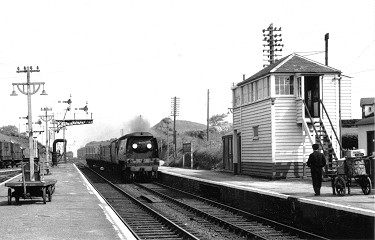 Right:
Right: 

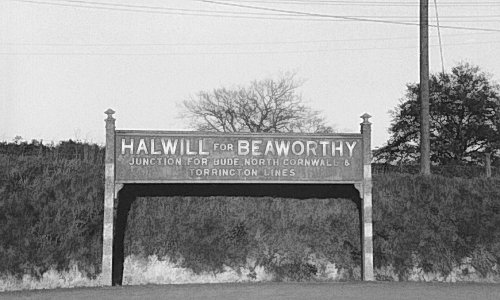
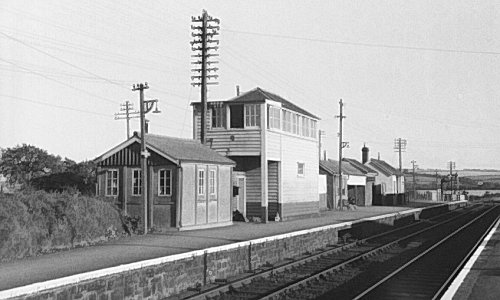
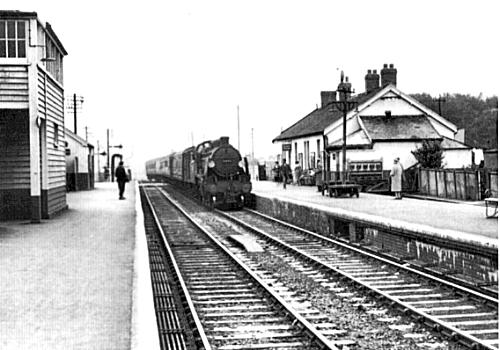
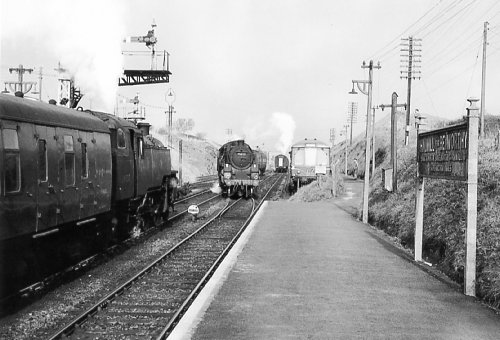

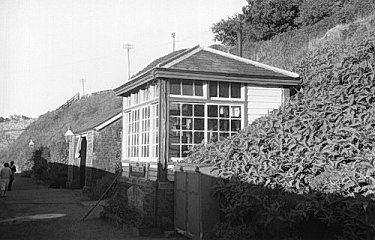 Left: The
Signalbox and waiting shelter on Ashwater's down platform.
Left: The
Signalbox and waiting shelter on Ashwater's down platform.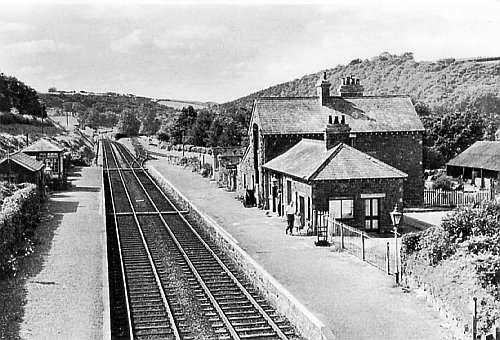

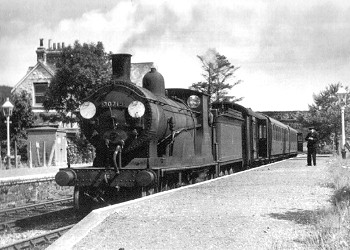 Right: T9 Class º30719 awaiting the right away at Tower Hill,
date unknown.
Right: T9 Class º30719 awaiting the right away at Tower Hill,
date unknown.